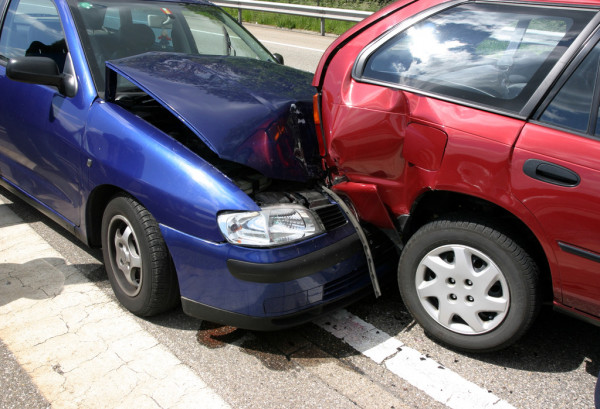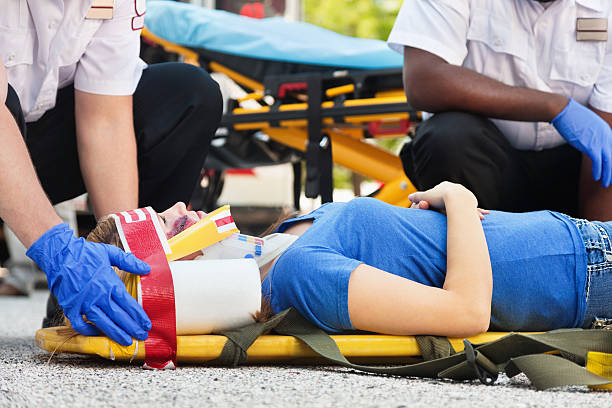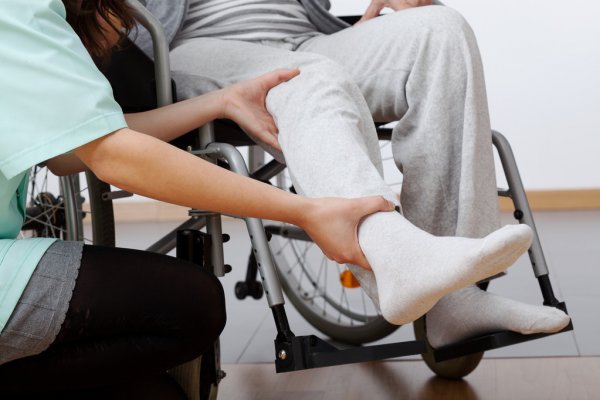
Negligence happens when someone behaves recklessly or carelessly. It can come in two different forms. Firstly, someone can be negligent by being reckless while driving a vehicle. And someone can also be negligent by being careless while driving a car. In short, you can be held responsible for damages if you were acting recklessly and someone gets injured as a result.
Drivers have a duty to be mindful of everyone on the road, including motorcycle riders, cyclists, pedestrians, and other drivers. That means you should drive safely and follow all the traffic laws, signals, and signs. You may not think that speeding is a problem, but if it injures someone, you’ll be held responsible for negligent driving.
Injuries Caused by Negligence
Negligence is a determining factor in catastrophic injury lawsuits and claims. It’s where another organization or individual has been negligent, and it injures another person. If this happens, the negligent party may be held legally responsible.
Your catastrophic injury attorney will have to negotiate with their insurance company for compensation for the damage incurred from your injuries. Here are a few examples of injuries caused by negligent behaviors.
Automobile Accidents
While driving on the road, you have to be cautious to avoid injuring motorcycle riders, cyclists, pedestrians, and other drivers. If you can’t exercise this duty of care, you’re breaching the duty owed to other drivers. If that negligent action causes an accident or injury to someone, you’ll be legally responsible.
If you breach your duty of care, you’re putting other people at greater risk for injuries or even death. Many people breach the duty of care in different ways. For example, you were texting someone behind the wheel. It can be a negligent act that injures somebody. Below are more examples of negligence while driving a vehicle.
- Not monitoring tires and engines
- Driving aggressively
- Not following traffic signals and signs
- Improper lane changes
- Overspeeding
- Impaired driving
- Distracted driving
- Running a red light
Premises Liability
Your slip and fall accidents are the most common example of premise liability cases. In these cases, the property’s owner needs to maintain their premises to minimize the risk of injuries. For instance, if a restaurant doesn’t clean up the wet floor for hours, they’ve already breached the duty to their customers if they fall and slip as a result.
Dog Bites
Dog owners are often liable if their pet bites someone. In the law, any person whose pet injures an individual is responsible for damages caused by that animal. You’ll also be held accountable if the dog injures or attacks another person without provocation.

What Is Catastrophic and Non-Catastrophic Injury?
Personal injury accidents are common. Nearly 40 million people visit the emergency room annually, while almost 60 million people seek immediate injury treatments from a doctor. Injuries involving catastrophic injuries are also common, with nearly 1.7 million people suffering traumatic brain injuries annually.
For patients suffering from serious injuries, the lost earning potential and medical costs for treatment and rehabilitation can significantly affect their well-being and finances.
What Is a Catastrophic Injury?
Most catastrophic injuries happen suddenly and without any warning. That can leave a victim with long-term and life-changing damages. Most people think that spinal cord injuries resulting in paralysis are the most common of catastrophic injuries.
However, there are other kinds of catastrophic injuries and many potential causes. Injuries that significantly affect your life or require extensive treatment are catastrophic. Below are a few examples of catastrophic injuries that can significantly affect victims.
Brain Injuries
Brain injuries are one of the most catastrophic injuries due to the problems that they can cause. Many victims suffer long-lasting injuries that impair them to perform daily activities. Traumatic brain injuries have two classifications: closed and open.
An open injury results from external impacts on your skull, while a closed injury occurs when the brain makes an impact against the skull. Depending on how damaged the brain was and what caused the injury, the severity of the symptoms differs.
Spinal Cord Injuries
Injuries to the spine can also have long-lasting effects on your life. Your spinal column connects the brain to the other parts of your body. That allows the nerve signals to relay sensory information and coordinate movements.
If your spinal cord gets injured, you may lose all mobility and feeling in your body. Depending on how seriously damaged the spinal cord was, you may suffer a total or partial loss of sensation and movement.
Burn Injuries
Depending on the injury’s depth and severity, you may experience third-, second-, or first-degree burns. Massive burn injuries may also lead to emotional trauma, severe damage to your skin, disfigurement, or respiratory problems.
In addition, third- and second-degree burns may require extensive treatment, including rehabilitation therapy, reconstructive surgeries, and skin grafts.
Other Causes of Catastrophic Injuries
Though accidents can cause catastrophic injuries, other circumstances can cause these kinds of damages, including:
- Injuries on unsafe premises
- Construction accidents
- Motorcycle accidents
- Trucking accidents
- Automobile accidents

What Is a Non-Catastrophic Injury?
Non-catastrophic injuries are the damages that you’re expected to recover from. On top of that, non-catastrophic injuries can be severe, but you should expect to recover. You also won’t need ongoing treatment for the rest of your life. Non-catastrophic injuries can come in different forms, including:
- Head injuries like concussions
- Minor burn injuries that will heal
- Lacerations, tears, cuts, or bruises
- Broken bones
| More Information About Catastrophic and Non-Catastrophic Injury | |
| How to Prove Negligence for Catastrophic Injuries | In filing a claim, you should prove that the responsible party was negligent. Four elements should
be present to have a valid claim:
|
| Proving Negligence for Non-Catastrophic Injuries | Proving negligence for non-catastrophic injuries can mean:
|
| The Fault in Catastrophic and Non-Catastrophic Injuries | Proving fault entails gathering proof and evidence. Your attorney can do this by:
|
Increase your chances of winning your personal injury case by contacting the expert attorneys from Diamond and Diamond Miami.

Did you know?
“Your knowledge of the difference between catastrophic and non-catastrophic injuries could help you claim what’s rightfully yours in personal injury cases.”
– Diamond and Diamond Miami
How a Catastrophic and Non-Catastrophic Injury Attorney Can Help You
If you sustained injuries due to another person’s negligence, you could file a personal injury claim. That’s helpful if you missed work and incurred medical bills. Diamond and Diamond Miami has a team of seasoned personal injury attorneys.
We’re dedicated to protecting our victim’s rights and helping them recover the monetary compensation they deserve. Don’t hesitate to contact us at 1-800-567-HURT to schedule a free consultation that will help you identify the responsible party. We’ll also help you determine how the negligence caused your injuries.
